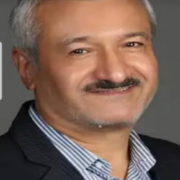Abstract
Background: Experience with vesicoureteral reflux (VUR) resolution differs in different centers.
Objective: The aim of this study was to evaluate the epidemiologic characteristics and outcome of VUR among Iranian children.
Patients and Methods: In this cohort study, 1278 children with urinary tract infection (UTI) who were visited at the pediatric nephrology clinic; Tehran, IR Iran during 1999 to 2007 were studied. Following the diagnosis, patients received prophylactic low-dose oral antibiotic and one to two yearly follow-ups with Radionuclide Cystography (RNC). Patients underwent surgery in case of breakthrough infection or new renal scar formation.
Results: Vesicoureteral reflux was found in 533 patients (42%) with a mean age of 6.3± 3.6 years (Range 2 days to 18 years), out of which 436 (82%) were females. During 3.3 ± 2.2 years follow-up, spontaneous resolution was observed in 109 (39%) of 279 patients with follow-up RNCs. Mean time to spontaneous resolution was 1.5 ± 1 years. Frequencies of VUR grades at initial investigation were 18%, 37%, 26%, 11% and 8% for grades I to V respectively, and 46% had bilateral VUR. Grades I to V resolved in 63%, 57%, 27%, 22% and 10%, respectively. Anti reflux surgery was performed in 27(10%) of patients. Two handred fourty nine patients proceeded to follow-up with Dimercaptosuccinic acid (DMSA) scan. There were 4 (4%) renal scars in patients with spontaneous resolution and 8 (5%) renal scars in patients without spontaneous resolution of VUR (P > 0.05).
Conclusions: According to the excellent results with medical therapy, it is recommended that VUR grades 1 to 4 be managed medically with low-dose antibiotic prophylaxis and close follow-ups.
Implication for health policy/practice/research/medical education:
Due to importance of VUR in children that it can be progressed to CKD, this article will focus on the benefit of medical treatment and close follow-up of these patients.
Please cite this paper as:
Sharifian M, Boroujerdi HZ, Dalirani R, Maham S, Sepahi MA, Jahromy MH, et al. Spontaneous resolution of vesicoureteral reflux (VUR) in Iranian children: A single center experience in 533 cases. Nephro-Urol Mon. 2011;3(3):191-195.
Article history:
Received: 30 Oct 2010
Revised: 18 Dec 2010
Accepted: 2 Jan 2011
Keywords
Full Text
Full text is available in PDF
